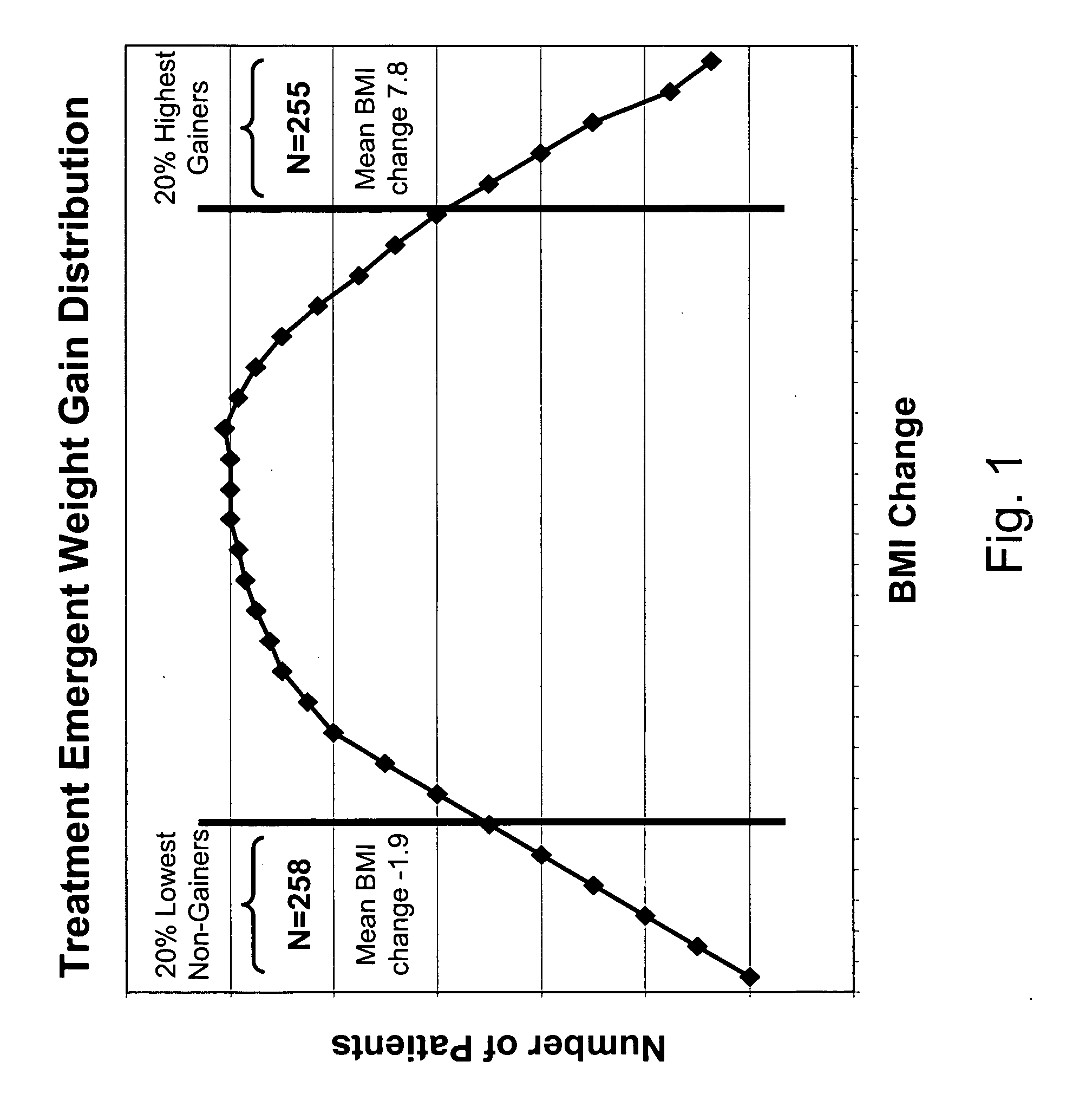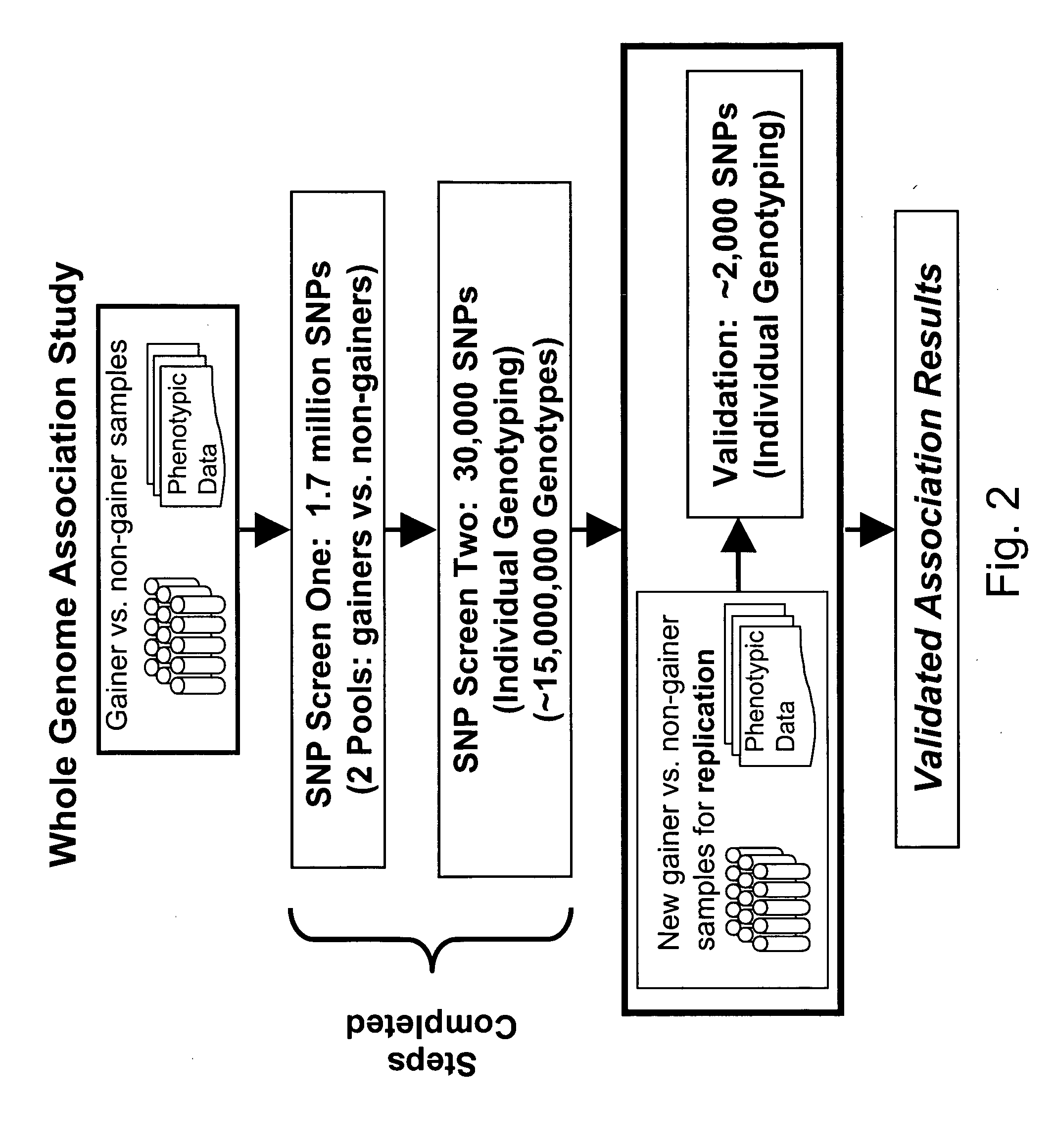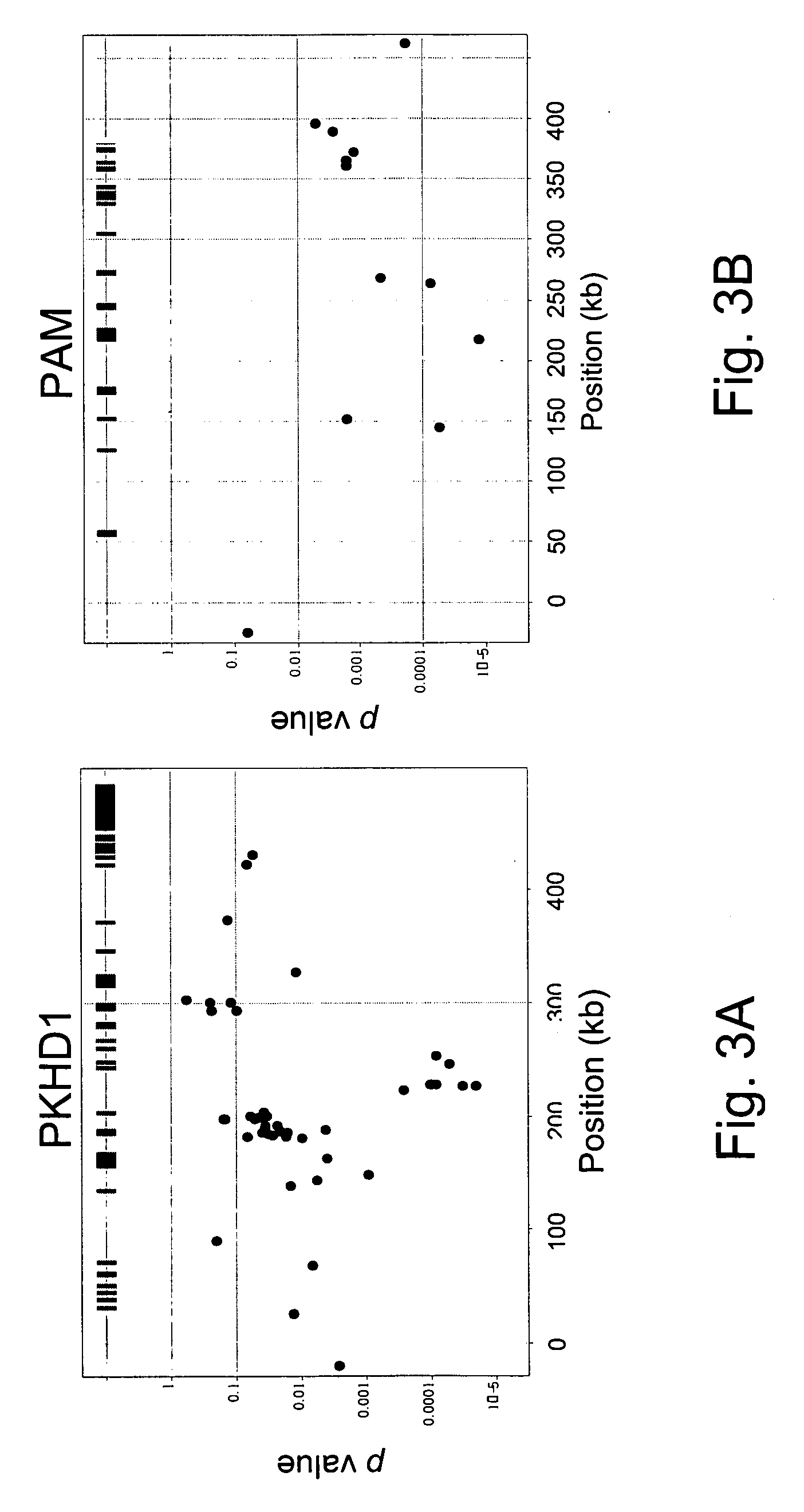Markers for metabolic syndrome obesity and insulin resistance
a metabolic syndrome and insulin resistance technology, applied in the field of metabolic syndrome obesity and insulin resistance markers, can solve the problems of difficult diagnosis of metabolic disorders, unclear significance of several reported, and complex underlying biological mechanisms between insulin resistance and metabolic risk factors (at the molecular level). the effect of precise and robustness
- Summary
- Abstract
- Description
- Claims
- Application Information
AI Technical Summary
Benefits of technology
Problems solved by technology
Method used
Image
Examples
example 1
[0214] The entire human genome was scanned to identify common polymorphisms using microarray technology platforms as described in U.S. Ser. No. 10 / 106,097, entitled “Methods for Genomic Analysis”, filed on Mar. 26, 2002, assigned to the same assignee as the present application; U.S. Ser. No. 10 / 284,444, entitled “Chromosome 21 SNPs, SNP Groups and SNP Patterns,” filed on Oct. 31, 2002, assigned to the same assignee as the present application; and Ser. No. 10 / 042,819, entitled “Whole Genome Scanning,” filed on Jan. 7, 2002, assigned to the same assignee as the present application, all of which are incorporated herein by reference. The microarrays are manufactured using a process adapted from semiconductor manufacturing to achieve cost effectiveness and high quality.
example 2
[0215] Polymorphisms identified in Example 1 were grouped into haplotype blocks and haplotype patterns using methods disclosed in U.S. Ser. No. 10 / 106,097, entitled “Methods for Genomic Analysis”, filed Mar. 26, 2002 (Attorney Docket 200 / 1005-10), incorporated herein by reference. Representative polymorphisms, haplotype blocks and haplotype patterns from an entire human chromosome (chromosome 21) are disclosed in, for example, Patil, N. et al, “Blocks of Limited Haplotype Diversity Revealed by High-Resolution Scanning of Human Chromosome 21” Science 294, 1719-1723 (2001) and the associated supplemental materials, incorporated herein by reference.
example 3
[0216] DNA from each individual in the case (obesity phenotype) and control (non-obese phenotype) groups was purified by methods well known in the art. The samples ranged between 2-10 milliliters each. The concentrations of each DNA sample were adjusted to create stock solutions with DNA concentrations between 0.4 μg / μl and 0.6 μg / μl.
[0217] To further evaluate the purified DNA, 0.1 microgram of DNA was analyzed by agarose gel electrophoresis on a 0.8% agarose gel containing 3-5 μl of 10 mg / ml ethidium bromide per 100 ml of agarose. 2 μl of the DNA stock solution were added to enough water to create a 0.05 μg / μl dilution. Standard loading buffer was added to the sample and the sample was loaded onto the gel. The gel was run at 150 volts for 40-45 minutes, and then subjected to ultraviolet light so that a photograph could be taken. A strong band of genomic DNA on the gel was an indication that the majority of the DNA was not degraded; a smear on the gel was an indication that the DNA...
PUM
| Property | Measurement | Unit |
|---|---|---|
| waist circumference | aaaaa | aaaaa |
| concentrations | aaaaa | aaaaa |
| concentrations | aaaaa | aaaaa |
Abstract
Description
Claims
Application Information
 Login to View More
Login to View More - Generate Ideas
- Intellectual Property
- Life Sciences
- Materials
- Tech Scout
- Unparalleled Data Quality
- Higher Quality Content
- 60% Fewer Hallucinations
Browse by: Latest US Patents, China's latest patents, Technical Efficacy Thesaurus, Application Domain, Technology Topic, Popular Technical Reports.
© 2025 PatSnap. All rights reserved.Legal|Privacy policy|Modern Slavery Act Transparency Statement|Sitemap|About US| Contact US: help@patsnap.com



